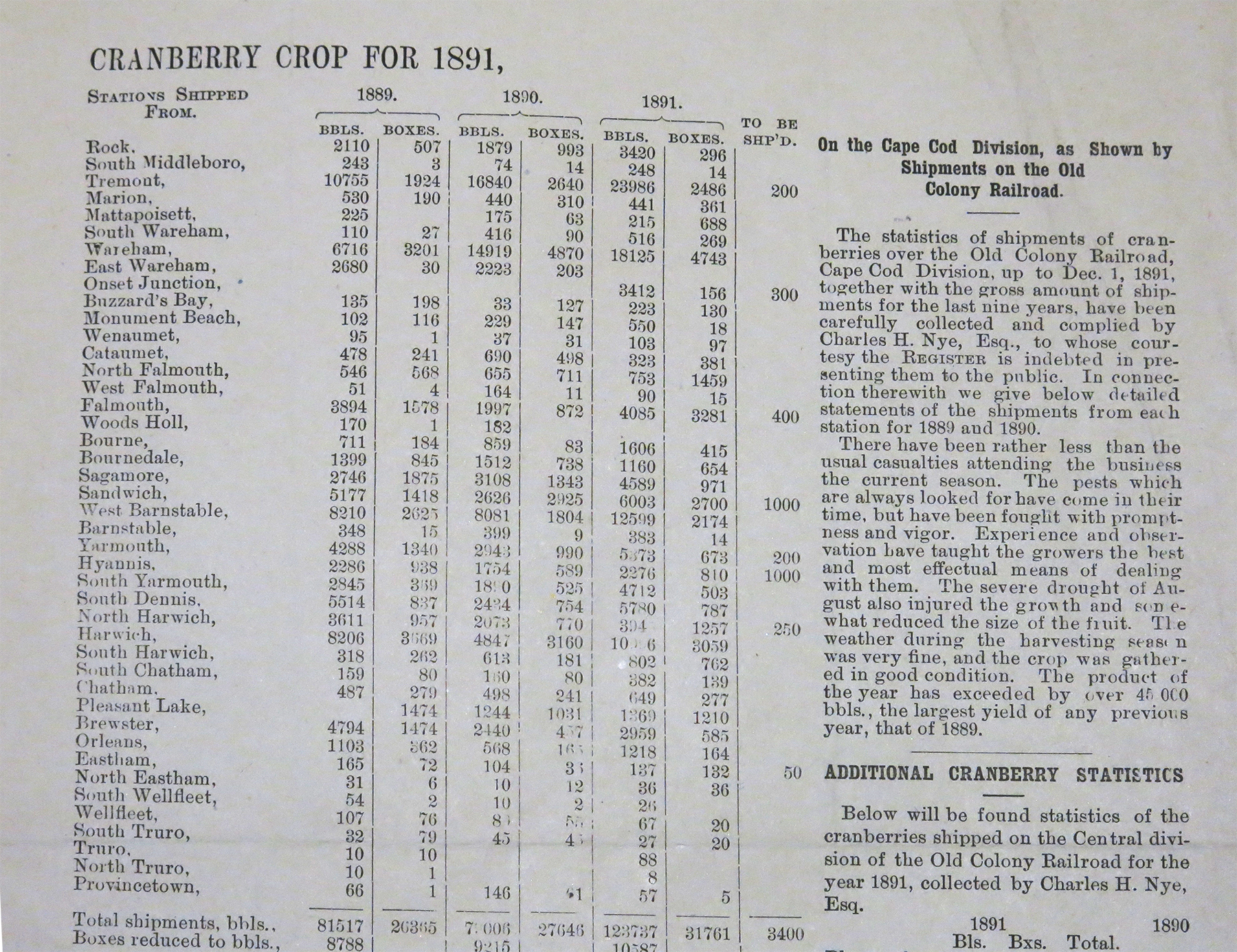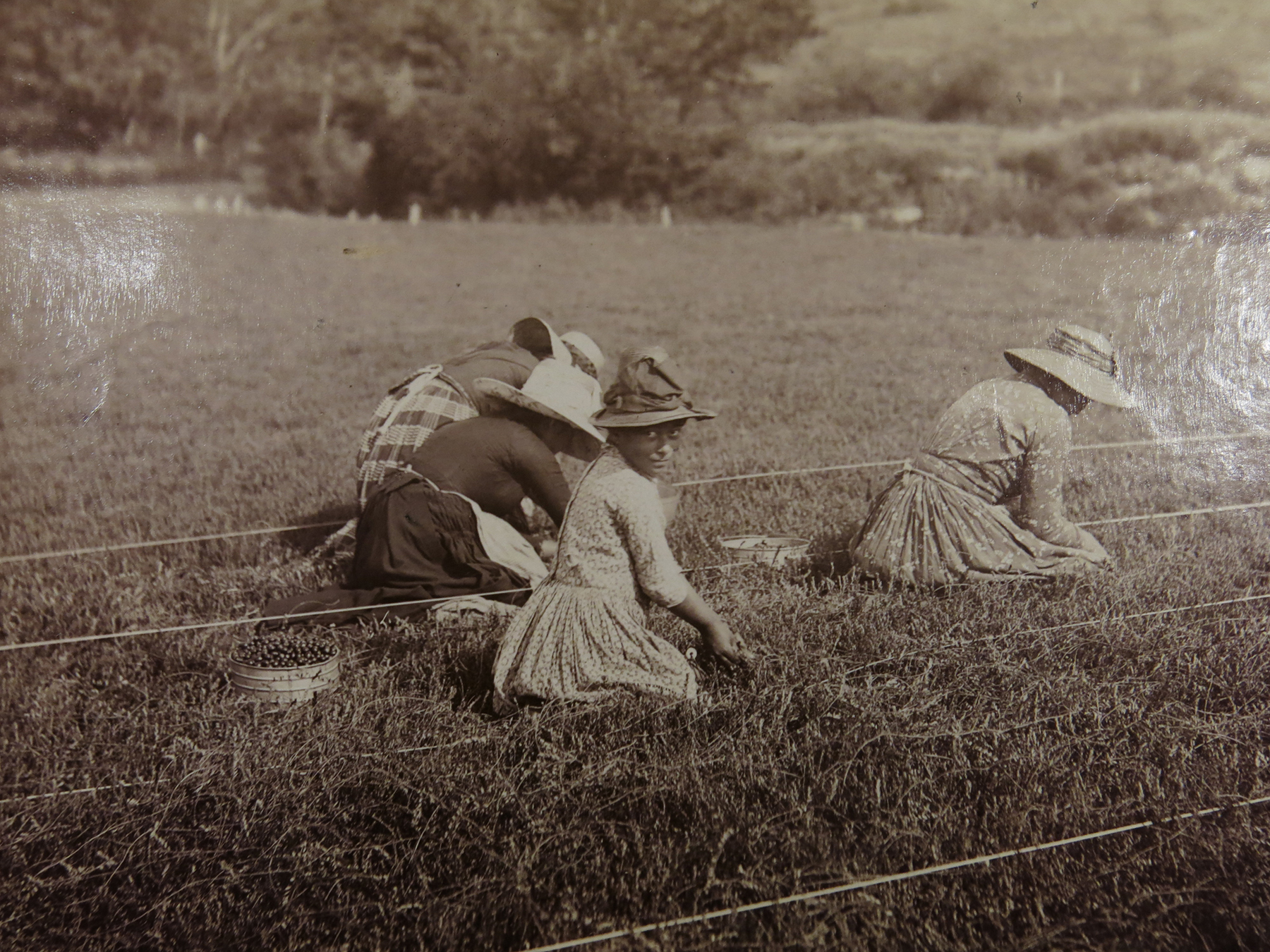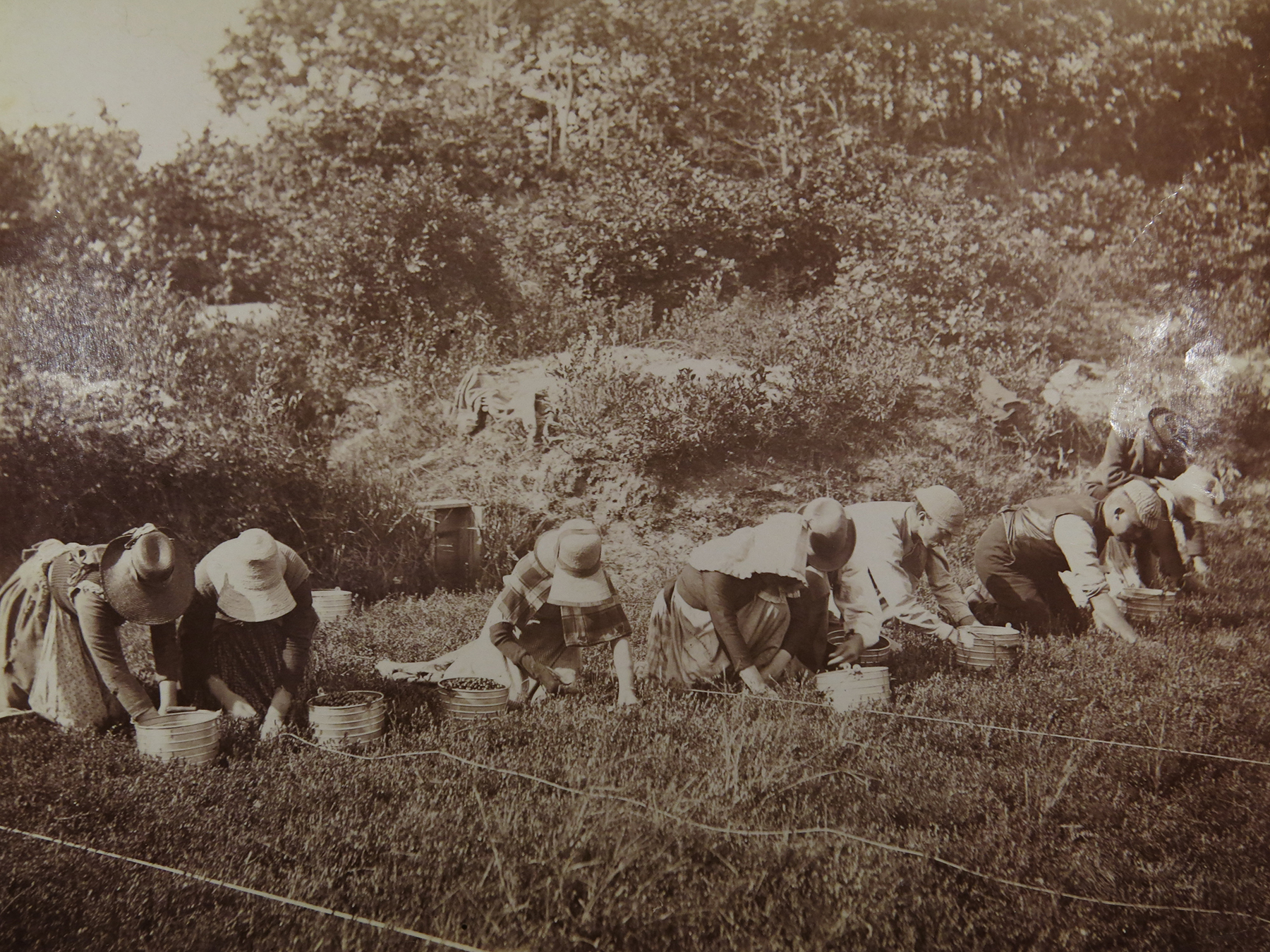By Brendan Kieran, Reader Services
With Thanksgiving around right around the corner, I decided to explore the story of a fruit that appears in a sauce on many Thanksgiving plates: cranberries. More specifically, I looked through MHS resources to see what I could learn about the history of cranberries and cranberry growing in the state. While Massachusetts is home to a notable cranberry industry, I didn’t know too much about it beyond quick glimpses of bogs I see from the car when I go to Cape Cod. I ended up learning a bit about the practice of growing cranberries as well as the connection of the industry to immigration and the development of Cape Verdean communities in Massachusetts.

An 1891 broadside in the collection, Cranberry crop for 1891, sheds some light on the geographic scope of the cranberry industry in late 19th century Massachusetts, the means of transportation for harvested cranberries, and the general productivity of the crop over the course of the years 1889, 1890, and 1891. The broadside has statistics, put together by a Charles H. Nye, Esq., for barrels and boxes of cranberries shipped from various stations along the Cape Cod Division of the Old Colony Railroad, along with a briefer set of statistics for the Old Colony Railroad’s Central Division. Some stations, such as Tremont, Wareham, West Barnstable, Harwich, seem to have been quite busy during this time. 1891 in particular was a bustling year for cranberry shipments along the Cape Cod Division, as over 130,000 barrels were shipped that year, which “exceeded by over 45,000 bbls., the largest yield of any previous year, that of 1889.”
The Ropes family photographs at the MHS include four photographs of workers harvesting cranberries on Cape Cod, circa 1900-1910. The photographer is unknown, and the exact location does not seem to be clear, but the photos do provide snapshots of cranberry harvesting in Massachusetts at that time.

I read two essays in They Knew they were Pilgrims: Essays in Plymouth History, edited by L.D. Geller (New York: Poseidon Books, 1971), that provide insights into the cranberry industry of the early 20th century and the people who worked in it, from the perspectives of two authors with family connections to cranberry work. In “Life on a Cranberry Bog at the Turn of the Century,” Rose T. Briggs chronicles some of the changes that occurred in the industry in the early decades of the 20th century, drawn from her experience growing up in a cranberry-producing family. She discusses the technological changes that changed the work, the increase of immigrants from Cape Verde in the workforce, and, later, the increase in women working in cranberry bogs. In “Plymouth and Some Portuguese,” Rev. Peter J. Gomes discusses, from his perspective as the descendant of Cape Verdean immigrants, the development of Cape Verdean immigration to Massachusetts, the role Cape Verdean workers played in the cranberry industry after it became a major employer of immigrants from Cape Verde in the early 20th century, and some of the general experiences of Cape Verdean immigrants in southeastern Massachusetts. These essays offer glimpses into the nature of the work on cranberry bogs as well as the groups of people and communities who participated in this work.

Peter J. Gomes, “Plymouth and Some Portuguese”
“But what was it that made people leave the old country for the New World? One obvious reason was the lust for adventure and the hope for a better life. The islands were overpopulated and one’s future pretty well determined at birth. The New World offered better economic opportunity. Another reason, not so talked about, was escape from military service.” (181).
“Immigration was also prompted by relatives already established in America” (181).
“From New Bedford they spread over the Cape and southeast coastal region, shipping out and tending to agriculture and odd jobs between voyages. As the whaling industry declined during the last two decades of the century, the Portuguese, like his quondam employer, the shipmaster, had to seek out other means of livelihood. “He found it in the cranberry industry.” (182).
“The life of the Portuguese on the bogs was harsh. It was bitter and grueling work for starvation wages. Cheap labor was needed and they were it. Uninitiated into the ways of collective bargaining . . . they were easy marks for the speculators and exploiters who were rife.” (183)
Rose T. Briggs, “Life on a Cranberry Bog at the Turn of the Century”
“Those were the days of hand-picking. We used a six-quart tin that had a lovely reverberation when the first berries were dropped into it, but took so long for a child to fill. Then you proudly lugged your tin up to the tally keeper, called out your number, emptied it (another satisfying sound) and returned to begin another. The bog was laid off in rows with section-line, so each picker or family had its own row, and no one could hog the best picking. The man in charge of the gang had an eagle eye for dropped underberries, and for thin spots neglected, and the tally-keeper rejected measures that were not properly full, or had vines stuffed into the middle!” (190)
“In 1900 snap machines were beginning to come in. They took some skill to operate, and of course were much faster than hand-picking. The men that operated them were paid by the hour, not the measure. In 1903 it was twenty-five cents an hour. Scoops were also coming in, and with them the Cape Verde Portuguese, who soon were the characteristic labor force on the bogs.” (190).
“When immigration was put on a quota basis, all this commuting to the Islands came to an end, and settled Portuguese communities grew up in this country. They too came picking.
“During World War II energetic women, Portuguese and others, operated a scoopers which had always been considered strictly a man’s job. The type of picking machine now in use is often operated by women. The big gangs of scoopers have gone. What strikes one now in looking at a picking crew, is the small number of people involved. Sometimes the tenders outnumber the pickers.” (191).
“Where the grower’s team once carted his berries to the railroad, huge trucks now come from outside to transport the crop.” (191)
“Cranberry growing is still a colorful business, but the days of self-sufficiency are over” (191).
If these materials interest you, feel free to visit the MHS library, which is open six days a week!

